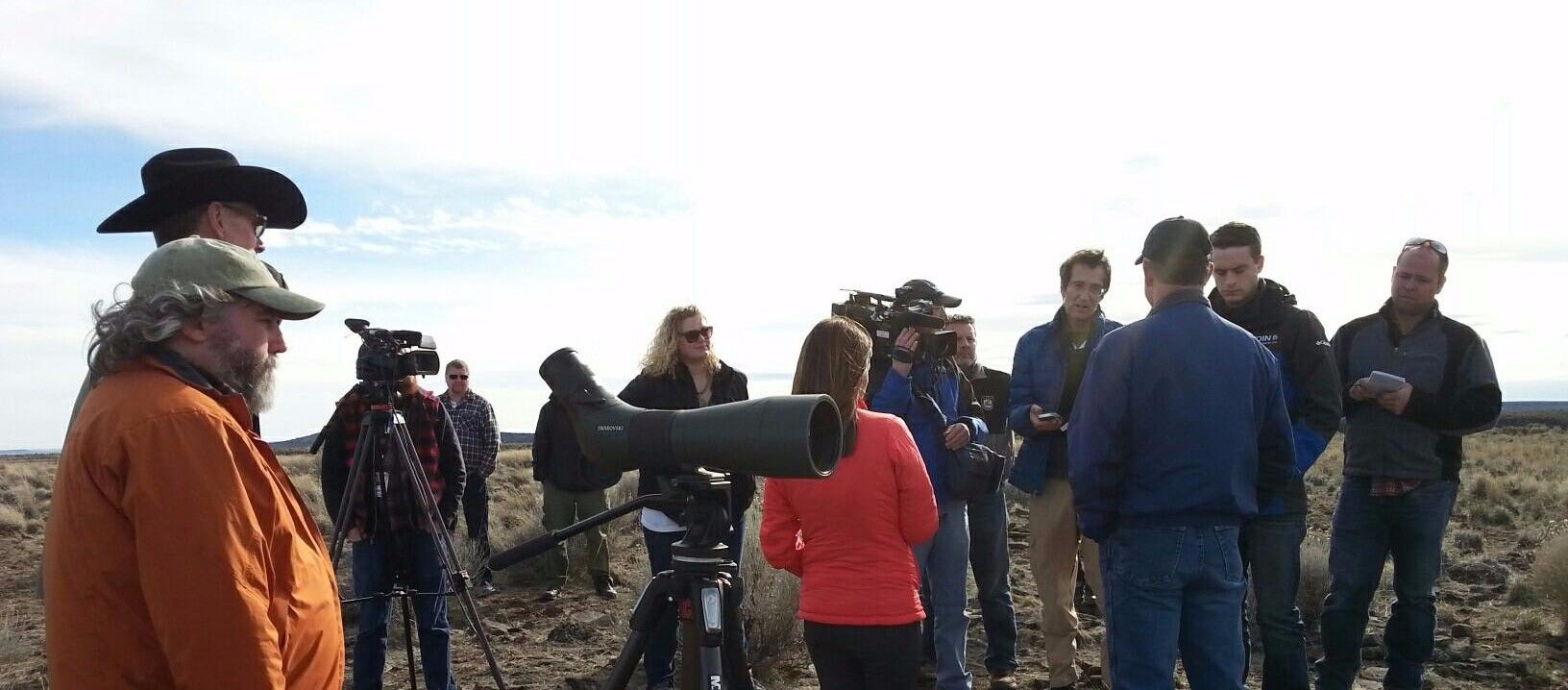Anyone who’s traveled up the Hines Logging Road recently might have encountered tree-fallers or, later, slash piles just west of the Burns Butte Shooting Range.
Such work is all part of a collaborative effort to protect critical infrastructure from wildfire. During a two-week span in September, contractors, who were operating on Bureau of Land Management directives, thinned and hand-piled 253 acres of juniper—an undertaking which was part of a broader strategy to reduce hazardous fuels. Additionally, this particular initiative, known as the Burns Butte Project, was focused on protecting essential communication towers and other key structures on Burns Butte.
The BLM’s Fuels Management program worked with High Desert Partnership's former Forest & Range Ecological Coordinator Josh Hanson to develop the project and the Harney County Wildfire Collaborative reached consensus to move forward with it. While BLM footed the bill, funding came from the recent “Infrastructure Investment and Jobs Act,” a bipartisan initiative meant to help repair, modernize and protect communities across the country. While the Burns Butte Project was a smaller, stand-alone effort, it’s not an isolated one, but rather one that reflects ongoing commitments outlined in Harney County's Community Wildfire Protection Plan (CWPP). Such wildfire protection plans exist across Oregon, allowing communities to work together to achieve common goals and identify local priorities for community protection.
The CWPP has helped create partnerships among government agencies, private landowners, and volunteer organizations to mitigate fire risks throughout Oregon. According to Irene Jerome, a seasoned fire prevention expert and former Grant County CWPP coordinator, community involvement is key.
“We do better when these things are grassroots, community-driven,” Jerome said.
This project is also linked to the Radar Hill Fuel Break project, an ongoing program aimed at creating defensible zones around Burns. According to Derek Shoun, Fire Mitigation Specialist with the Burns Interagency Fire Zone, this work complements the broader goal of community protection, especially as it falls on a cross section of BLM, state and private land.
“The Burns Butte Project was identified through the CWPP as a critical area to protect,” Shoun explained.
Early planning began in fall of 2023, and contractors completed cutting and piling operations this September. Future steps include burning or discarding the piles based on the wishes of the various landowners and managers.
Juniper thinning is vital in fire management for several reasons. The trees can increase the intensity and spread of wildfires if left unmanaged. Junipers are also water hogs, consuming large amounts of groundwater while intercepting precipitation that might otherwise fall on other vegetation. As they proliferate, they can also crowd out native shrubs, forbes and grasses essential to wildlife, livestock and the overall health of the landscape. Thinning restores the landscape closer to its natural state, reducing the risk of catastrophic fires. As Jerome pointed out, the project’s goal is to “imitate the natural systems.”
Public misconceptions, however, can pose challenges. Some residents are uncomfortable with any tree-cutting, while others might be opposed to controlled burns and the resulting smoke. While both notions are understandable—trees are important and smoke is a nuisance—but thinning and controlled burns are critical fire-mitigation strategies that benefit both the land and the community in the long term.
Unfortunately, residents won’t be able to harvest the felled juniper for firewood from this project due to the access restrictions and attendant complexities when dealing with such a mix of private, state and federal lands. Plus, according to the Burns Interagency Fire Zone, the piles are stacked in a particular manner so as to burn efficiently while doing the least amount of harm to the soil and surrounding vegetation.
Despite these inconveniences, Shoun explained that community support for the thinning project remains strong, particularly as residents witness tangible steps to safeguard the area from fire hazards.
Collaboration among local, state, and federal agencies underpins the project’s success. High Desert Partnership (HDP), a key player in this effort, emphasizes the importance of bringing diverse perspectives to the decision-making table.
"Ultimately, it’s listening to each other, trying to understand each other’s perspectives, and moving forward in a progressive way," Jerome said.
This juniper thinning project highlights the value of cooperation, with interested parties including private landowners, Oregon State Lands, and federal entities working together. In fact, the Urizar family, who owns the land on the project site, was crucial to the initiative’s success, said the BLM’s Joe Sullivan, a fuels management specialist.
Thanks to such collaboration and community buy-in, Shoun, Sullivan’s BLM colleague, is optimistic about future projects. “These cross-boundary projects are a huge success story for our community and the partnerships in place,” he said.
Beyond infrastructure protection, the Burns Butte Project underscores the importance of long-term thinking in fire management. To that end, Jerome offered a few final nuggets of sage advice. First among them: trust local experts and fire professionals. “Those folks are passionate … they want to improve things, but we have to do things on a landscape scale.” Plus, Jerome reminded, the clock is already ticking down to next fire season.
“If you wait, it’s too late,” she said.

